STORY HIGHLIGHTS
- 1,774 people are confirmed dead from Haiyan, the government says
- Disaster agency says 2,487 people have been injured, 660,000 displaced
- Another 14 dead in Vietnam and five in China, those governments say
- International relief heads for stricken islands, but roads a problem
Cebu, Philippines Typhoon Haiyan has killed too many people to count so far and pushed to the brink of survival thousands more who have lost everything, have no food or medical care and are drinking filthy water to stay alive.
By Tuesday, officials had counted 1,774 of the bodies, but say that number may just be scratching the surface. They fear Haiyan may have taken as many as 10,000 lives.
The storm has injured 2,487 more and displaced at least 580,000 people since it made landfall six times last Friday, the government said.
As authorities rush to save the lives of survivors four days after Haiyan ripped the Philippines apart, a new tropical low, Zoraida, blew in Tuesday delivering more rain, the Philippine national weather agency PAGASA reported.
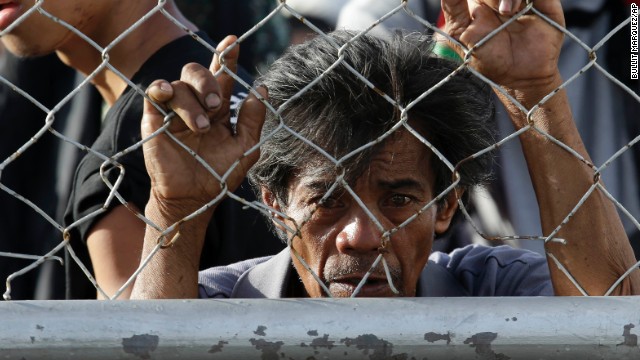
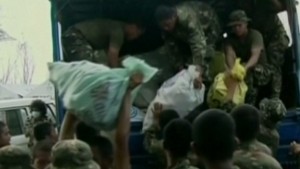

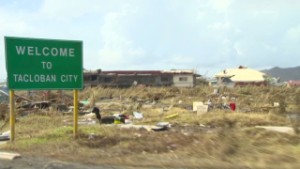
Zoraida is not a strong storm, but has dumped just under four inches of rain in some places, CNN meteorologists say.
It is holding up desperately needed aid in at least one province, Iloilo, where Gov. Arthur Defensor Sr. has grounded relief flights until it has passed.
Zoraida also slowed air aid in the neighboring province of Cebu, an official said, although military planes continue flying at the maximum-allowed level of risk there.
As night falls Tuesday, darkness will further hamper flights, said Lt. Col. Marciano Jesus Guevara. Unless runways are lit, pilots will not be permitted to land. Electricity is out throughout devastated areas, and it may take months to restore it, authorities said.
Boats and trucks will still operate, but like in many areas, whole houses, vehicles, trees and high piles of debris cover miles of roadways in affected regions.
It will take heavy machinery and much time to clear them, and although international supplies have begun to arrive at airports, much of it is still not getting through to people who need it most.
Acts of desperation
More than 2 million people need food aid, the Philippine government said. Nearly 300,000 of them are pregnant women or new mothers.
Tomoo Hozumi, the Philippines' UNICEF representative, said food, shelter, clean water and basic sanitation were "in a severe shortage."
"The situation on the ground is very hideous," he told CNN's "The Situation Room."
The lack of food and water drove famished survivors to desperate measures.
They've taken food and other items from grocery and department stores in Tacloban, a city of more than 200,000, that Haiyan -- called "Yolanda" in the Philippines -- has laid to waste. Authorities there have counted 250 bodies so far.
Shop owners in the capital of the devastated province of Leyte have organized to defend their wares with deadly force, said local businessman Richard Young.
"We have our firearms. We will shoot within our property," he said.
Authorities have sent police and military reinforcements to try to bring the situation under control.
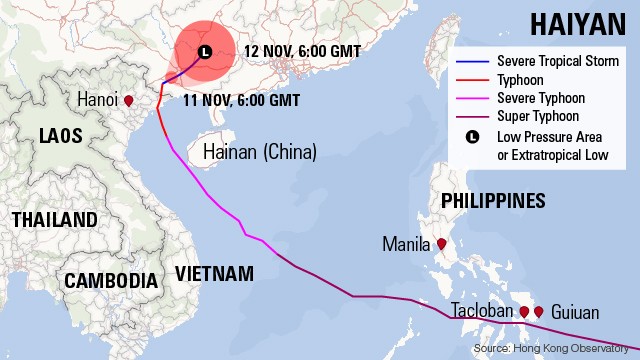
Soldiers shot dead two members of a communist militant group, the New People's Army, on Tuesday when they ambushed a government aid convoy, Philippine state news agency PNA reported.
The Philippines Armed Forces added 700 troops to its force in Tacloban Tuesday, it said, bringing the total to 1,000. That includes 300 special forces troops and military engineers.
The army will fly aid to survivors in remote areas around the city with 11 helicopters and as many trucks.
"We can't wait," said Martin Romualdez, the area's congressman. "People have gone three days without any clean water, food and medication," he told CNN's "Piers Morgan Live." "People are getting desperate."
The exodus from the ravaged areas is adding to road congestion, further slowing help from getting in.
Bodies everywhere
The dead are lying about everywhere.
"We have bodies in the water, bodies on the bridges, bodies on the side of the road," said Richard Gordon, chairman of the Philippine Red Cross. Aid workers see them floating in the water.
Some are crudely covered, others left out in the blazing sun. Some journalists covering the story wear masks to blunt the growing stench as they decompose.
The macabre sight may be the tip of the iceberg.
Many corpses are out of view, mixed up with the rubble spread out as far as the eye can see. Some of them may be buried inside homes covered over by mud and debris.
Worst typhoon?
Typhoon Haiyan may have hit the Philippines with the strongest sustained cyclone winds on record at 195 mph. It is too early for scientists to tell.
Gusts reported at first landfall rose to 235 mph (375 kph) -- also a record, if confirmed.
The Philippine ambassador to the United States has lived through many typhoons, but does not recall one worse than Haiyan.
"We have 20 to 24 a year. But we have not seen anything like this in the past," Jose Cuisia, Jr., told CNN's Anderson Cooper.
Storm chaser James Reynolds was shocked by Haiyan, even before the cyclone hit Tacloban, where he awaited its approach.
"My team and I were absolutely speechless about the storm, how strong it was getting," he said. "You know it was at the extreme upper level of a category 5 if it was in the Atlantic. It was a very frightening thing to witness."
Extreme weather photographer Jim Edds feels that their frequent exposure to typhoons caused Filipinos to underestimate this monster storm.
"I don't think they knew what was coming," he said. "They get typhoons in Philippines all the time. But my estimation is they say, 'okay, another typhoon. It's the same drill whether it's a 1 or a 5.'"
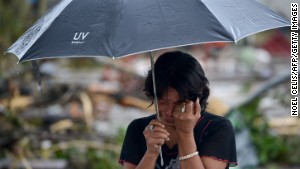
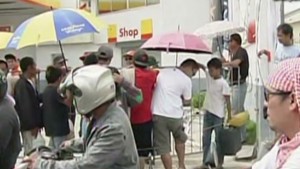
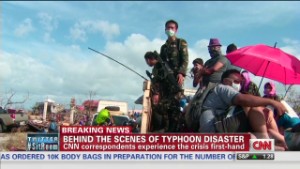
They went through their usual routine of riding out storms, and then the storm surge rolled over them, Edds believes.
Swimming for their lives
That's what happened to Philippine congressman Martin Romualdez.
He was holed up in his house, as Haiyan's winds screamed around it, hurling debris at speeds rivaling those of race cars.
"It was mad, and it was so loud, and when you look outside you couldn't see a thing," he told Anderson Cooper.
The wind ripped off the roof of the house. He rushed his kids into the shelter of a car standing nearby to protect them from flying objects.
Then the storm surge poured in.
"After a few minutes, I see this water gushing in, gushing in really fast, not thinking that the water was going to be rising," Romualdez said.
The car began to fill. His children are good swimmers, he said. So, he got out of the car with them, and they, and Romualdez' staff, swam for their lives as the waves pushed cars and houses along with them.
Storm chaser Reynolds stopped covering the storm to rescue some of its victims.
"It was a really sickening feeling," he told CNN's Wolf Blitzer. "The screams, we could hear them even above the roar of the storm and the smashing of glass."
He saw a woman breaking a window with her hands to get out of a hotel where she was trapped inside. Reynolds and a colleague rushed to her aid.
Relief efforts
Philippine President President Benigno S. Aquino III has declared a "state of calamity" in the stricken areas, which gives the government expanded powers to deal with the crisis, including the fixing of the prices of goods.
Aid pledges began to pour in on Monday -- $25 million from the United Nations, $4 million from the European Union, $16 million from Britain and $10 million from the United Arab Emirates, home to a large population of expatriate Filipino workers.
U.N. and U.S. civilian disaster assessment teams were on the scene. U.S. Marines based in Japan worked to outfit Tacloban's shattered airport with lights, radar and other gear to allow it to operate 24 hours a day.
The United States and the UK have pledged to dispatch Navy vessels to the Philippines to assist in recovery efforts.
Typhoon Haiyan weakened as it left the Philippines but went on to kill 14 more people in Vietnam and five more in China.
No comments:
Post a Comment